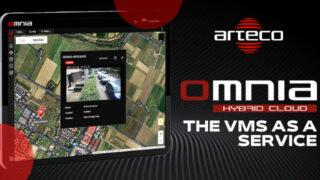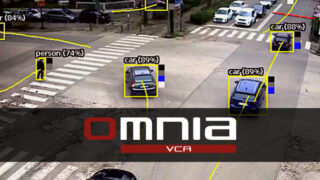Cloud computing and artificial intelligence (AI) are poised to dominate the field of video surveillance due to several factors:
Cloud-based video surveillance offers scalability and flexibility, allowing organizations to easily expand their video surveillance systems as needed. With cloud infrastructure, there is no need to invest in and manage on-premises hardware and storage devices. The cloud provides virtually unlimited storage capacity, enabling businesses to store and process large volumes of video data without the constraints of local infrastructure.
Cloud-based video surveillance eliminates the need for significant upfront investments in hardware, infrastructure, and maintenance. Instead, organizations can pay for the cloud services on a subscription basis or as per usage. This pay-as-you-go model reduces capital expenditures and allows businesses to scale their video surveillance systems as required, optimizing costs.
Cloud-based video surveillance systems enable remote access to video feeds and data from anywhere and at any time. This flexibility is particularly valuable for organizations with multiple locations or for businesses that require real-time monitoring and access to video feeds on the go. Users can securely access video footage through web browsers or dedicated applications, facilitating remote monitoring and management.
AI and machine learning technologies have advanced video analytics capabilities significantly. Cloud-based video surveillance platforms leverage AI algorithms to extract meaningful insights from video feeds in real-time. These AI-powered video analytics can automate various tasks, such as object detection, facial recognition, behavior analysis, and anomaly detection. By processing video data in the cloud, organizations can leverage the power of AI to enhance security and operational efficiency.
Cloud-based video surveillance allows centralized management of video data, settings, and analytics. This centralized approach simplifies system administration, configuration, and monitoring across multiple sites or cameras. It also enables the integration of video surveillance with other cloud-based applications and services, such as access control systems, incident management platforms, and data analytics tools.
AI-driven video analytics in the cloud can generate intelligent alerts and notifications based on predefined rules or anomalies detected in the video data. These alerts can trigger immediate response actions or notifications to security personnel, enabling quicker incident response and reducing manual monitoring efforts.
Cloud service providers invest heavily in data security measures, including encryption, access controls, and intrusion detection systems. Storing video data in the cloud can provide better security compared to on-premises storage, as cloud providers have robust security protocols and redundancy mechanisms in place to ensure data protection and availability.
Overall, the combination of cloud computing and artificial intelligence technologies offers numerous advantages for video surveillance and Arteco knows this well and for this reason proposes a software offer that paves the way for full cloud solutions and video analysis software based on deep learning that can be fully integrated into your VMS.
| OMNIA HYBRID CLOUD | OMNIA VCA |
 |
 |



